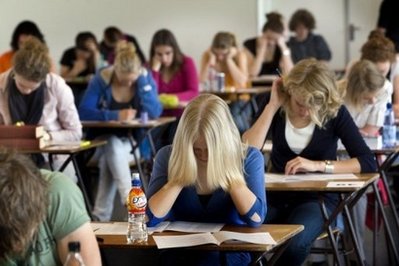
Women ages 16 to 20 are eligible to apply
About the Program
The Smith College American College Immersion Program (ACIP) helps international students—for whom English is not a first language—succeed in an American college or university.
Smith College has contracted with the International Language Institute of Massachusetts to bring English language instruction to the Smith campus. During the four-week program, students receive 15 hours of language instruction weekly and will have the unique opportunity to immerse themselves in life on an American Campus.
To ensure the program is equally rigorous for all ability levels, students are divided into groups of 10, each group with its own instructors. Language instruction is accompanied by intensive work in reading and writing comprehension. Strong writing skills in particular are required for success in American colleges and universities. ACIP writing classes are taught by Smith faculty and staff.
Immersion into American Culture
With the help of Smith College faculty, ACIP students have opportunities to immerse themselves in American culture through off-campus excursions, classroom activities and conversations with community members. From museums to farmers' markets, students will explore similarities and differences across cultures.
In addition to expanding their English language skills, young women in ACIP make new friends, get a taste of college life and get to know an American college town. ACIP participants will live together in a campus house along with interns (Smith undergraduate students), who serve as supervisors, advisers and teaching assistants, and the residential director (a Smith staff person), who is in charge of all aspects of students' residential life.
Northampton, MA
A city just under 30,000 and consistently ranked as one of the best college towns in the United States, Northampton supports a vibrant downtown with shops, restaurants, and galleries. From "Arts Night Out" to grabbing ice cream with friends at Herrells, you and your friends will have no shortage of fun things to do. Two hours (by car) west of Boston and Logan International Airport, Northampton is also just three hours northeast of New York City, and 45 minutes north of Bradley International Airport in Connecticut.
Excursions
A Weekend in Boston, Massachusetts
The trip will include tours of:
The Museum of Science (long respected as a leader in science education)
The Museum of Fine Arts (one of the largest museums in the United States)
Faneuil Hall Marketplace (Boston shopping and dining at its best)
The city (on land and water via "The Duck Tour")
A college campus (Boston University, Harvard University or Massachusetts Institute of Technology).
A Trip to Tanglewood
Students will enjoy a performance at Tanglewood, a world-renowned music festival located in Lenox, Massachusetts.
Visits to Colleges Near Smith
Mount Holyoke College, Amherst College, Hampshire College and the University of Massachusetts at Amherst. With Smith, these institutions make up the Five Colleges, Inc., a consortium that initiates and maintains cooperative academic and cultural programs. All five colleges are within a 12-mile radius of one another.
College Prep: Methods and Philosophy
Experiential learning in small, interactive classes
Highly qualified and caring instructors
A focus on successful oral and written communication for academic purposes
An integrated skills curriculum:
Speaking: Building confidence in presenting information in an academic setting
Reading: Learning strategies for improved reading, skimming, and scanning of college texts
Writing: Developing essay skills, including thesis statements, organization, punctuation, and citation
Listening: Increasing ability to understand college lectures, leading to better note-taking skills
Orientation in U.S. cultural differences academic expectations
How to Apply
Applications will be accepted and decisions will be made on a rolling basis.
Interested in further coursework at Smith?
Smith's Visiting Year Programs welcomes competitive applicants to continue studying at Smith for a year or semester taking regular coursework. The stated deadline is July 1, but ACIP students are given till July 22 to apply.
PROGRAM COST
Full payment for English Language Learning Program$5,195.00 (includes deposit)
 In the USA, children start school when they are five or six years old. Depending on the state, schooling is compulsory until the age of 16 or 18. Children younger than five can go to a nursery school or preschool.
In the USA, children start school when they are five or six years old. Depending on the state, schooling is compulsory until the age of 16 or 18. Children younger than five can go to a nursery school or preschool.


 Today's parent advocates do not limit themselves to coaching soccer teams and organizing bake sales as a way to get involved in their students' schools. But parents, educators and policymakers alike need to do more to "walk the walk" in working to close achievement gaps and improve education in the United States, Secretary of Education Arne Duncan told an audience of parent leaders Monday.
Today's parent advocates do not limit themselves to coaching soccer teams and organizing bake sales as a way to get involved in their students' schools. But parents, educators and policymakers alike need to do more to "walk the walk" in working to close achievement gaps and improve education in the United States, Secretary of Education Arne Duncan told an audience of parent leaders Monday.







